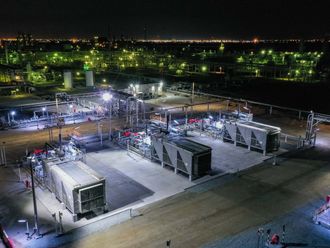London: Global oil demand will grow more slowly this year and next due to a worsening econ-omic outlook while supply is increasing, which should produce a more balanced oil market through 2012, the West's energy watchdog said yesterday.
The International Energy Agency cut its oil demand outlook for 2011 and 2012 by around 200,000 barrels per day (bpd) due to a "more precarious economic backdrop".
It said oil producing group Opec, which meets today in Vienna, was pumping oil at its highest in more than three years in November, a level that should be enough to meet demand and help rebuild stocks next year.
"We think that the market for 2011 and 2012 now looks tight to balanced and there is the prospect of it easing somewhat after that," said David Fyfe, head of the oil industry and markets division of the IEA.
Oil demand is set to grow by 730,000 bpd in 2011 to 89 million bpd, which is 170,000 bpd lower than in last month's forecast. The IEA's 2012 demand growth forecast is 1.26 million bpd, 40,000 bpd lower than its previous forecast.
Opec rose by 620,000 bpd to 30.68 million bpd in November, with Libya and Saudi Arabia accounting for 80 per cent of the increase, the IEA said.
The agency said it expected global demand for Opec oil to be below current Opec production levels, at 30.2 million bpd in 2012, a cut of 300,000 bpd from the IEA's previous report.
"Our base case is seeing a relatively balanced market next year if Opec continues to produce at the levels they have been producing at over the last three or four months," Fyfe said.
While the outlook for next year looked muted, on a longer term basis, it should pick up in subsequent years, the report said.
Estimates
Estimates of global oil demand rise from 88.3 million bpd in 2010 to 95 million bpd in 2016, the IEA said in its twice-yearly estimates for the medium term.
"Our preliminary medium-term update suggests a more comfortable market outlook than looked likely six months ago," the report said. Iil supply prospects look slightly stronger, noting that flows from Iraq and Libya are coming in at a faster pace, the report said.












